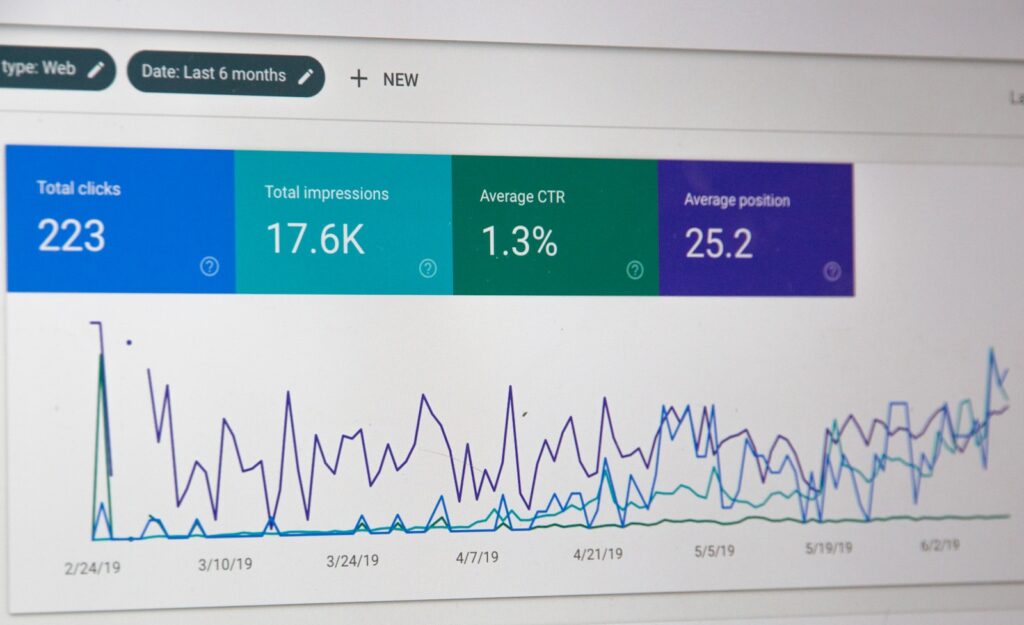Are you looking for web design SEO?
Imagine spending weeks, or even months, perfecting your new website. Every color, font, and image is chosen with care. The final product is visually stunning—a true work of art. You launch it with excitement, only to be met with silence. No new visitors, no new leads, just digital crickets. This is the reality for many businesses that treat web design and Search Engine Optimization (SEO) as separate tasks. A beautiful website that no one can find is like a billboard in the desert.
At Priceless Consulting LLC, we believe that great design and powerful SEO should be inseparable. Every site we build is created with SEO-first principles, blending a strong website’s visual appeal with a solid site structure and high performance. We focus on creating websites that not only look good but are built to rank from day one.
This guide will explain how search engines understand web pages, what makes a site truly SEO-friendly, and how your business can attract more organic traffic from the very beginning. We'll cover everything from site structure and mobile optimization to meta tags and user engagement.
Ready to make your website work smarter, not harder? Let’s get started.
What Is SEO in Web Design?
SEO, or Search Engine Optimization, is the practice of improving your website to increase its visibility when people search for products or services related to your business in search engines like Google. In the context of web design and web development, SEO is not just an add-on; it's a core component. It involves making strategic decisions about your website structure, content, and technical setup so that search engines can easily find, crawl, and index your web pages.
Looking for an experienced Wordpress Development company?
A beautiful website means nothing if search engines can’t find or understand it. The connection between SEO-friendly web design, user experience, and search engine rankings is direct. When your website is easy for users to navigate, loads quickly, and provides relevant content, search engines take notice. They reward user-friendly websites with higher placements in search engine results pages (SERPs), leading to more website traffic and potential customers.
Does Web Design Include SEO?
Absolutely. Every step of the web design process—from initial planning of the site structure to the final content layout—profoundly affects your site's SEO. A common misconception is that SEO is something you do after a site is built. In reality, a truly effective SEO strategy begins with the very first blueprint of your website.
At Priceless Consulting, we integrate SEO best practices from the ground up. This means considering how responsive design, page speed, and mobile optimization will influence search results. We ensure every website is built with a foundation of strong technical SEO and on-page SEO.
Here’s how design elements directly impact SEO:
- Internal Links and Navigation Flow: A logical navigation structure helps both users and search engine bots find important pages on your site. Clear internal links distribute authority and help search engines understand the hierarchy of your site’s content.
- Meta Tags, Title Tags, and Descriptive Alt Text: These elements provide search engines with context about your pages. A well-written title tag and meta description can improve click-through rates from search results, while descriptive alt text on images makes your site more accessible and provides another opportunity for relevant keywords.
- Structured Data and Schema Markup: This is code that you add to your site to help search engines understand your content more deeply. Schema markup can tell Google that a piece of information is a review, an event, or a product, which can lead to rich snippets in Google search results and improve visibility.
How SEO and Web Design Work Together
SEO and web design are two sides of the same coin. Together, they form the backbone of your online visibility. While web designers focus on the website's visual appeal and creating a positive user experience, web developers build the functional framework. An SEO-friendly approach ensures that both aspects work in harmony to please users and search engines.
Search engines reward well-structured, user-friendly websites—not just good-looking ones. This requires a careful balance between your site's design and its performance. A visually stunning website loaded with heavy animations may look impressive, but if it takes too long to load, visitors will leave, and your search engine rankings will suffer.
Here’s how design and SEO collaborate for success:
- Importance of Loading Speed: Page speed is a critical ranking factor. Clean code, optimized images, and efficient hosting all contribute to faster loading speed, which improves user experience and your site's SEO.
- Role of Mobile Devices and User Experience (UX): With more users searching on mobile devices, a responsive design is non-negotiable. A website that looks and works great on any screen provides a seamless user experience, reducing bounce rates and signaling to Google that your site is valuable.
- Using Content Management Systems (CMS): Platforms like WordPress offer powerful tools and plugins (like Yoast SEO or RankMath) that give you greater control over your site's SEO, making it easier to manage meta tags, create sitemaps, and optimize relevant content.

Photo by Stephen Phillips – Hostreviews.co.uk on Unsplash
The Four Types of SEO Every Website Needs
A comprehensive SEO strategy involves more than just adding keywords to your pages. To build a site that ranks, you need to address four distinct areas of SEO.
- On-Page SEO: This involves optimizing the individual web pages on your site. It includes incorporating relevant keywords into your titles, headings, and body content, as well as optimizing your meta descriptions and image alt text. The goal is to make it clear to both users and search engines what each page is about.
- Technical SEO: This focuses on the backend of your website to improve its performance. Key aspects include optimizing your site structure, ensuring fast page speed, implementing schema markup, and creating an XML sitemap. A strong technical SEO foundation makes it easy for search engine bots to crawl and index your site.
- Off-Page SEO: This refers to actions taken outside of your own website to impact your rankings within search engine results pages. It primarily involves link building—earning high-quality backlinks from other reputable websites. These links act as “votes of confidence,” telling search engines that your site is authoritative and trustworthy.
- Local SEO: For businesses that serve a specific geographic area, local SEO is crucial. This involves optimizing your online presence to attract more business from relevant local searches. Tactics include claiming your Google Business Profile, managing online reviews, and creating location-specific content.
Essential Elements of SEO-Friendly Web Design
Building an SEO-optimized website from day one requires a strategic checklist. By incorporating these elements into your web design and development process, you set your site up for long-term SEO success.
- Keyword Research Tools: Before you write a single line of code or content, use keyword research tools like Ahrefs or SEMrush to understand what your target audience is searching for. This data should inform your site structure and content strategy.
- Meta Descriptions and Title Tags: Write compelling, keyword-rich title tags and meta descriptions for every page. The title tag is a major ranking factor, while a good meta description entices users to click on your link in the search results.
- Image Optimization: Large images slow down your website. Compress images to reduce their file size without sacrificing quality, and always use descriptive alt text to give search engines context.
- Internal Links & Navigation: Create a logical site structure with a clear hierarchy. Use internal links to connect relevant pages, which helps search engines understand the relationship between your content and improves user navigation.
- Mobile Optimization: Ensure your website has a responsive design that provides a flawless experience on desktops, tablets, and mobile devices. Google uses the mobile version of your site for indexing and ranking.
- Schema Markup: Implement structured data to help search engines better interpret the content on your pages. This can enhance your appearance in Google search results with rich snippets, giving you a competitive edge.

Photo by Lukas Müller on Unsplash
Common Web Design Mistakes That Hurt SEO
Even the most beautiful websites can fail to rank if they fall victim to common design flaws. These mistakes can make it difficult for search engines to crawl your site or create a poor user experience, both of which will hurt your ability to generate organic traffic.
Avoid these pitfalls:
- Using too much animation or JavaScript that hides content: Heavy scripts can slow down your site, and if your content is hidden within complex code, search engines might not be able to “see” or index it.
- Ignoring site speed and responsive layouts: A slow-loading or difficult-to-use mobile version of your site will drive users away and harm your search engine rankings.
- Forgetting to include meta tags and descriptive titles: Missing or duplicate meta tags are a missed opportunity to tell search engines what your pages are about.
- Not planning for internal linking or URL hierarchy: A flat, disorganized website structure makes it hard for search engines to identify your most important pages.
- Skipping Google Analytics and Google Search Console setup: These free tools provide invaluable data on your website's performance, keyword rankings, and technical issues. Flying blind without them is a recipe for failure.
Don’t let design flaws cost you ranking. Schedule a free website audit today.
How We Build SEO-Optimized Websites at Priceless Consulting LLC
At Priceless Consulting LLC, our process is designed to deliver SEO-optimized websites that perform from the start. We merge creative design with technical precision, guided by our veteran-owned commitment to reliability and transparency.
Our process follows a clear path:
- Discovery: We start by understanding your business, target audience, and goals. We conduct keyword research to lay the groundwork for a data-driven SEO strategy.
- Design: Our web designers create a visually appealing, user-friendly interface that reflects your brand. Every design element, from navigation to call-to-action buttons, is planned with user engagement in mind.
- Development: Our web developers build your site on a custom WordPress foundation. We write clean code, optimize for speed, and implement technical SEO best practices to ensure a high-performing final product.
- Optimization: Before launch, we configure tools like Google Analytics and Google Search Console to track your website’s performance. We also provide ongoing SEO strategy and content updates to help you continue to grow your online presence.
How to Measure SEO Success After Launch
Launching your website is just the beginning. To ensure your SEO efforts are paying off, you need to monitor key performance metrics. Using a combination of SEO tools, you can track your progress and make informed decisions to attract more organic traffic.
Essential Tools:
- Google Analytics: Track website traffic, user behavior, and conversion rates.
- Google Search Console: Monitor your site's health, see which search queries bring users to your site, and identify technical issues.
- Ahrefs/SEMrush: Analyze backlinks, track keyword rankings, and research competitors.
- RankMath or Yoast SEO: These WordPress plugins help you optimize on-page SEO for every page and post.
Metrics to Monitor:
- Organic Traffic Growth: An increase in visitors from organic search results is a clear sign your SEO strategy is working.
- Search Engine Rankings: Track your position for target keywords to see if you are gaining visibility.
- Bounce Rate & User Engagement: A low bounce rate and high time-on-page indicate that users find your content valuable.
- Conversion Rates: Ultimately, the goal is to convert visitors into customers. Track form fills, phone calls, and sales to measure your ROI.

Photo by Campaign Creators on Unsplash
Web Design SEO | Partner with Priceless Consulting LLC for a Website That Ranks and Converts
A successful digital marketing presence starts with a website that perfectly balances design and SEO. By integrating SEO strategy from day one, you create a powerful asset that attracts customers and drives growth. At Priceless Consulting LLC, our dual expertise in web design and SEO ensures you get a website that is not only visually stunning but also built to climb the search engine rankings.
We offer transparent pricing, affordable packages, and results-driven support tailored for small businesses. Our veteran-owned discipline means we deliver on our promises with integrity and precision.
Your customers are searching—let’s make sure they find you.
Schedule your free consultation today.








